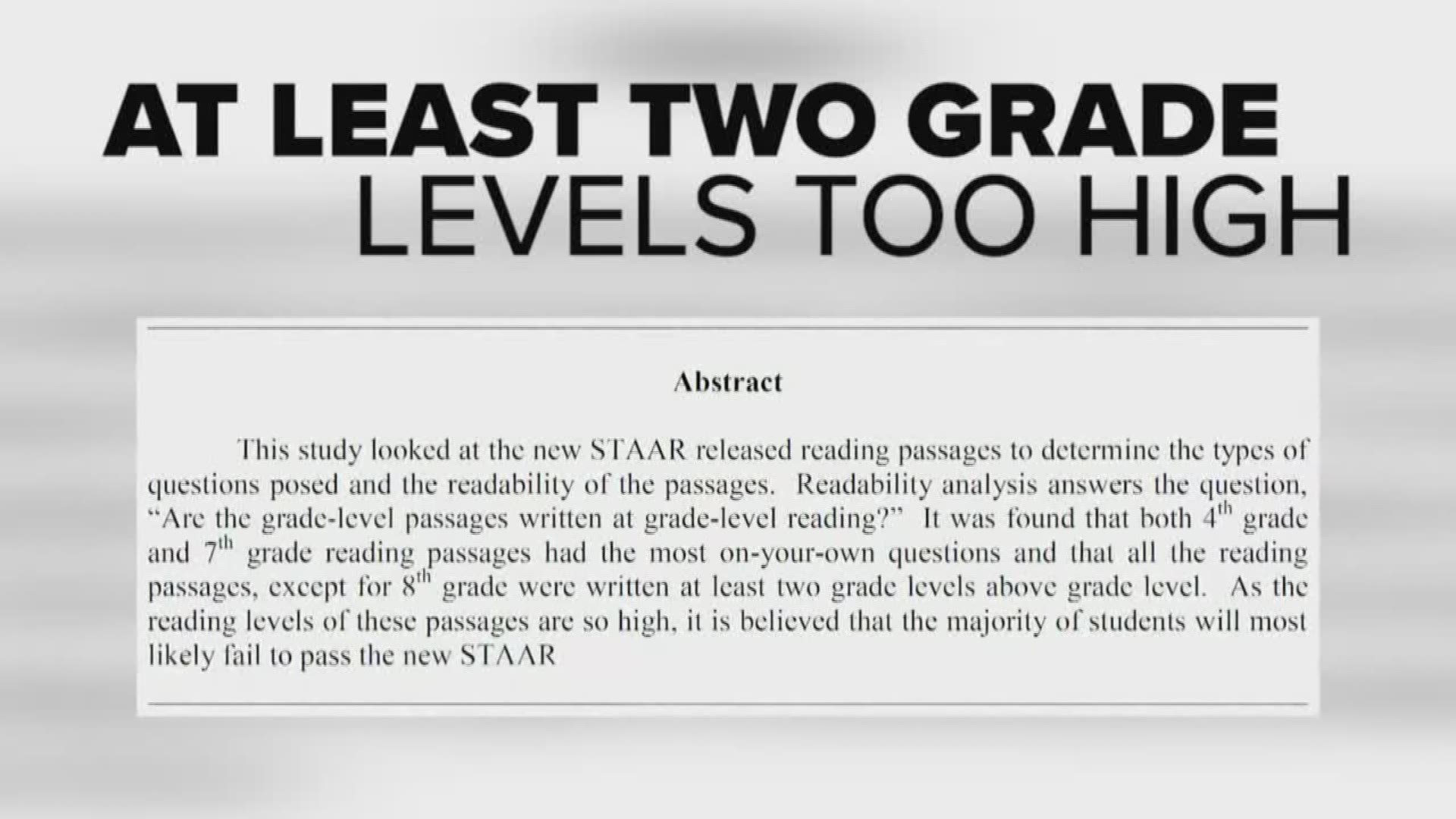HOUSTON — Many teachers on social media are asking whether the STAAR test is too hard for kids after a popular article suggested many tests are between one to three grade levels too advanced.
In a February article for Texas Monthly, author Mimi Swartz looked at two studies that ran STAAR reading tests through at least five "readability tests". One 2016 study, by the University of Mary Hardin-Baylor, found most reading passages are one to three grade levels too high. The other study, done in 2012 by Texas A&M University-Commerce, found most STAAR reading tests they analyzed were at least two grade levels above the students’ current grade level.
“I’m not surprised,” said Dr. Diane Miller, an Associate Professor of Literacy at the University of Houston-Downtown. “The things they said in the article resonated with me quite a bit.”
Before working at UH-D, Dr. Miller spent two decades in K-12 public education and recently helped the state revise its reading standards.The literacy professor says she's seen classroom instruction greatly improve in that time.
“So to not see that come to fruition on the test shows that there's a big disconnect,” she said.
The STAAR tests include poetry and nonfiction, which Dr. Miller says can throw off the readability scales, but overall, she believes the method is accurate.
"(Researchers) averaged them out, and several different data points were telling them the same thing," said Dr. Miller, noting the U.S. Department of Defense and medical clinics use the tests to help make manuals and brochures easy to read and understand.
Coretta Fontenot, an English III-American Literature teacher at Chavez High School in Southeast Houston, also read the Texas Monthly article.
"The language of the test is usually very different from the language we use in class,” said Fontenot, who has spent 22 years in education. “At a high school level, the language is more complex. It tends to be at a college level.”
Fontenot, who previously worked as a literacy coach and testing coordinator, took a second look at the third grade STAAR reading tests after reading the Texas Monthly article. She believes the questions are more complexly framed.
"For example, now kids are actually being covered two to three different skills or objectives in one question versus one skill that may have been explicitly taught by the teacher over the course of one year,” said Fontenot.
Fontenot said she'd like to see the STAAR add simpler language, bring back the modified version, and create a more accessible version for ESL students.
Dr. Miller told KHOU she wants to see several assessment strategies with progress monitored throughout the year.
"We are teaching the whole child, and so we need to be assessing the whole child,” said Dr. Miller. “ "You've got a snapshot of one day of a child's year, and how accurate can that ever be?"
A spokesperson for the Texas Education Agency, which administers the STAAR test, declined an interview on Friday but released this statement to KHOU:
“The recent concerns that have been raised about the grade-level appropriateness of STAAR passages underscores a greater problem – that for more than a decade, Texas students' reading performance has remained flat or has declined. We know this not only from STAAR scores, but from TAKS scores before that, from NAEP scores nationally, and from how well those students do later in life. We remain committed to working with all Texas educators to strengthen our reading instruction so that every child in every school learns to read at grade level.
TEA is confident that the assessments are on grade level. Our test development process is rooted in Texas standards, reviewed by Texas teachers, and field tested by Texas students to ensure that every test is fair, valid, reliable, and grade-level appropriate. TEA has and will continue to rely on the judgment of Texas teachers to determine what is an appropriate grade-level expectation for Texas students. TEA will also continue to listen to feedback from educators to make improvements to the test development process as needed. Similarly, TEA will continue to use Lexile and computer-based readability algorithms like it to provide resources for parents to help them find a good book for their child, and in turn, to help foster a love of reading.”
Take a look at a few STAAR related questions here.

